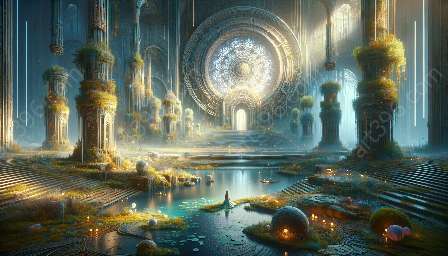Animation concept art plays a crucial role in evoking emotional responses from the audience. The process of creating concept art for animation involves capturing the essence of characters, environments, and narratives in a visually compelling manner. This article explores the significance of emotional impact in animation concept art and its role in captivating and engaging viewers.
The Power of Emotions in Concept Art for Animation
Emotions are the cornerstone of storytelling and character development in animation. Concept artists are tasked with visually expressing the various emotions and personalities of the characters they create. Through the use of color, composition, and visual elements, concept art conveys the emotional depth of the narrative, thereby establishing a strong connection with the audience.
Character Development and Emotional Resonance
Concept art is instrumental in shaping the personalities and traits of animated characters. By infusing emotional cues and nuances into the character designs, concept artists breathe life into the fictional personas. Expressive facial expressions, body language, and visual storytelling techniques are employed to convey specific emotions, enabling the audience to empathize and connect with the characters on a profound level.
Creating Dynamic Environments and Atmosphere
Emotional impact extends beyond character design and permeates the creation of immersive environments and atmospheric settings. Concept art for animation employs evocative visual language to evoke a range of emotions, from wonder and awe to fear and melancholy. The careful manipulation of lighting, color palettes, and architectural elements helps in crafting environments that evoke specific emotional responses, thereby enriching the narrative experience.
Storytelling through Visual Aesthetics
Visual storytelling is at the heart of animation concept art. The utilization of visual aesthetics such as composition, framing, and visual metaphors enables concept artists to communicate the underlying emotional beats of the narrative. Through the orchestrated arrangement of visual elements, concept art guides the viewer through an emotional journey, effectively conveying the intended mood and tone of the story.
Empathy and Engagement with the Audience
Ultimately, the emotional impact of concept art in animation serves as a catalyst for audience engagement and emotional investment. By eliciting empathy and stirring emotions, concept art fosters a profound connection between the audience and the animated world. This emotional bond enhances the overall viewing experience, leaving a lasting impression on the viewer.
Conclusion
Animation concept art wields a powerful influence in shaping the emotional landscape of animated stories. Through its adept portrayal of emotions, character development, environments, and visual aesthetics, concept art for animation paves the way for immersive and emotionally resonant storytelling. The ability of concept art to evoke and convey emotions lies at the heart of its impact on the audience, making it an indispensable component of the animation creation process.

